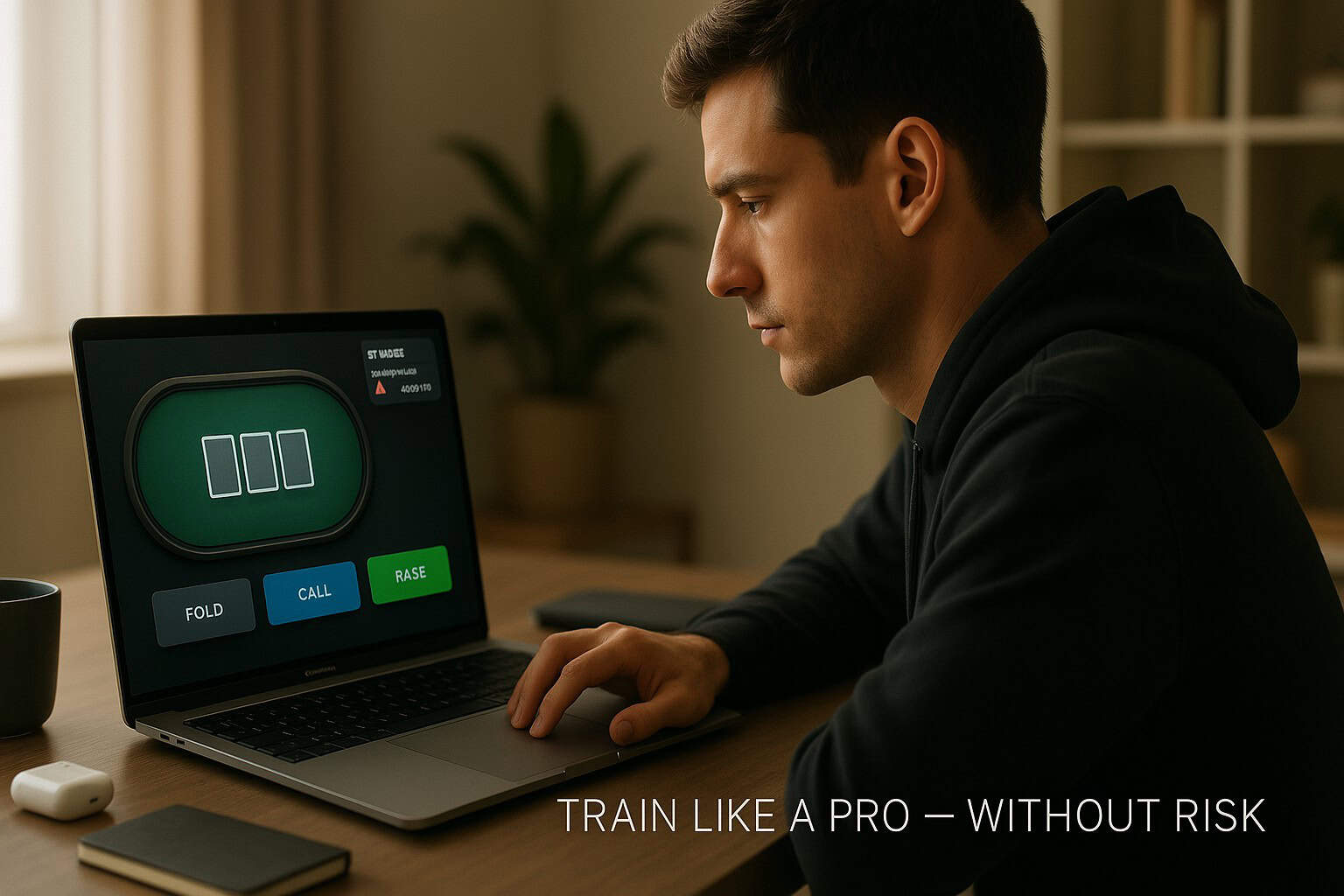
Virtual Poker Practice: Simulator Tips
What if you could practice poker with zero risk, perfect focus, and instant feedback – no bankroll required?
Welcome to the new era of virtual poker training, where you sharpen your reads, refine your ranges, and battle simulated opponents that play better than most humans. Whether you’re a casual grinder or a tournament regular, these tools are changing the way we learn and compete.
In this article, we break down what makes AI-powered poker practice so effective, how modern platforms replicate real-game dynamics, and how to get the most out of your digital study sessions.
Why Train Virtually in the First Place?
Simple: experience is everything.
But traditional learning – burning real money while figuring out mistakes – is inefficient and expensive. Virtual training allows you to:
- Practice high-volume hands in minutes
- Get instant feedback on decisions
- Test new strategies risk-free
- Play against a range of styles (from loose-passive to GTO bots)
- Track progress across time
And unlike static poker cheat sheets or hand charts, today’s apps learn from you.
What Makes a Virtual Poker Trainer Effective?
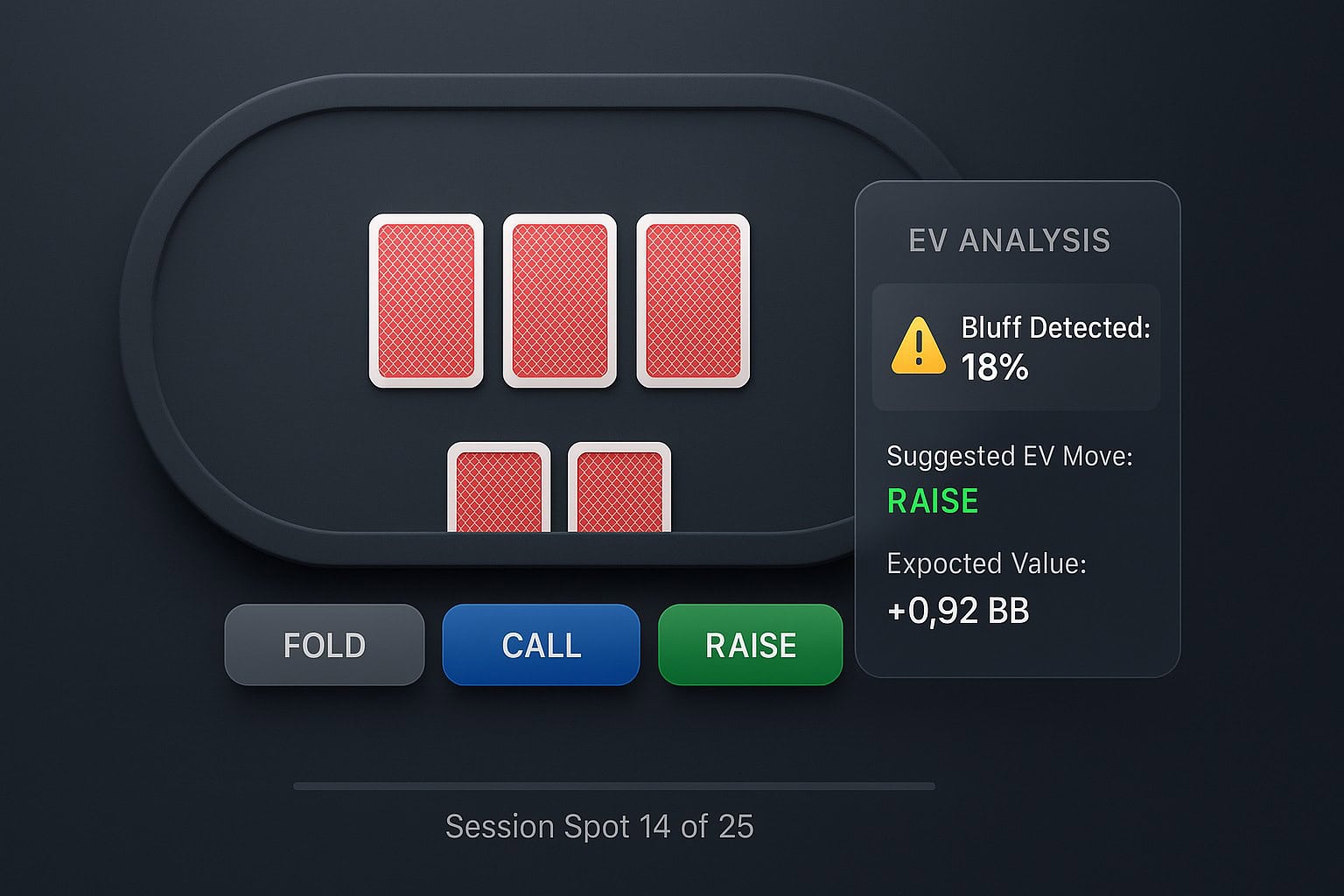
Not all trainers are created equal. The best combine game realism, data tracking, and adaptive logic. Here’s what to look for:
- AI Opponent Modeling
Top platforms use AI poker bots that simulate a variety of playstyles:
- GTO-perfect bots
- Exploit-heavy bots
- Tilt-prone or erratic bots (for mental toughness)
These aren’t basic scripts. They learn as they play. If you’re leaking value, they’ll spot it faster than a human coach.
- Scenario Randomization
Each hand isn’t just random – it’s strategically seeded to test specific decision points: 3-bet pots, ICM bubbles, multiway flops. This focused training builds pattern recognition fast.
- Performance Tracking
You’re not just guessing. Virtual poker apps provide:
- Leak charts
- Positional win rates
- “Hands to review” queues
- Personal EV graphs
It’s like having a poker cheat sheet that updates every session, tailored just for you.
- Real-Time Feedback
Make a bad river call? The trainer instantly explains what you missed. It’s not just what was wrong – but why. Some even visualize the missed EV in chips or dollars.
The AI Difference: Why Bots Make Better Sparring Partners
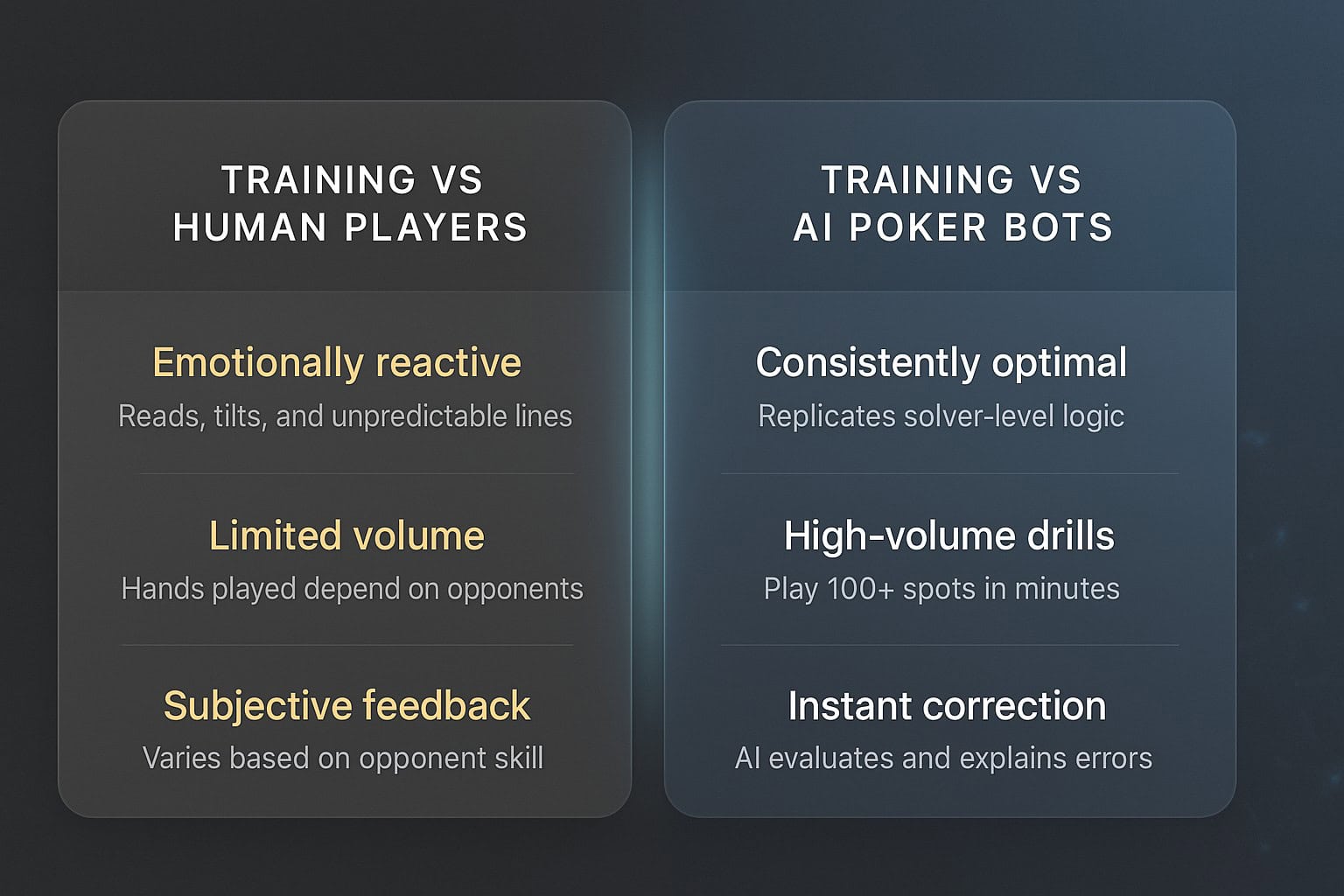
You can grind against real players all day, but humans make emotional mistakes. Bots don’t.
Especially ai poker bots that replicate GTO ranges and exploit profiles. They:
- Pressure your ranges consistently
- Punish sizing errors
- Adapt to your tendencies
- Never tilt, stall, or spew
You don’t have to worry about collusion or chatbox nonsense. You get pure, clean reps – against an opponent that plays better than most regs online.
That’s why training against bots isn’t just practice – it’s evolution.
Virtual Training Platforms Worth Checking Out
Here are some examples (based on recent testing):
Lucid Poker Trainer
- UI: sleek and mobile-friendly
- Strength: adjusts difficulty in real time
- Bot types: GTO / Exploit / “Randomized Human”
- Best feature: “Auto-drill mode” based on session history
GTOBox
- UI: desktop app, clean charts and overlays
- Strength: pure GTO accuracy
- Bot types: solver-backed engine with node locking
- Best feature: “Find My Leak” report generator
PokeRPG
- UI: gamified, mission-based
- Strength: mindset + tactics training
- Bot types: themed AI characters with playstyle tags
- Best feature: Emotional control meter + tilt challenges
Each has its own flavor – but all outperform mindless hand reviews or reading another generic strategy article.
From Cheat Sheets to Adaptive Coaching
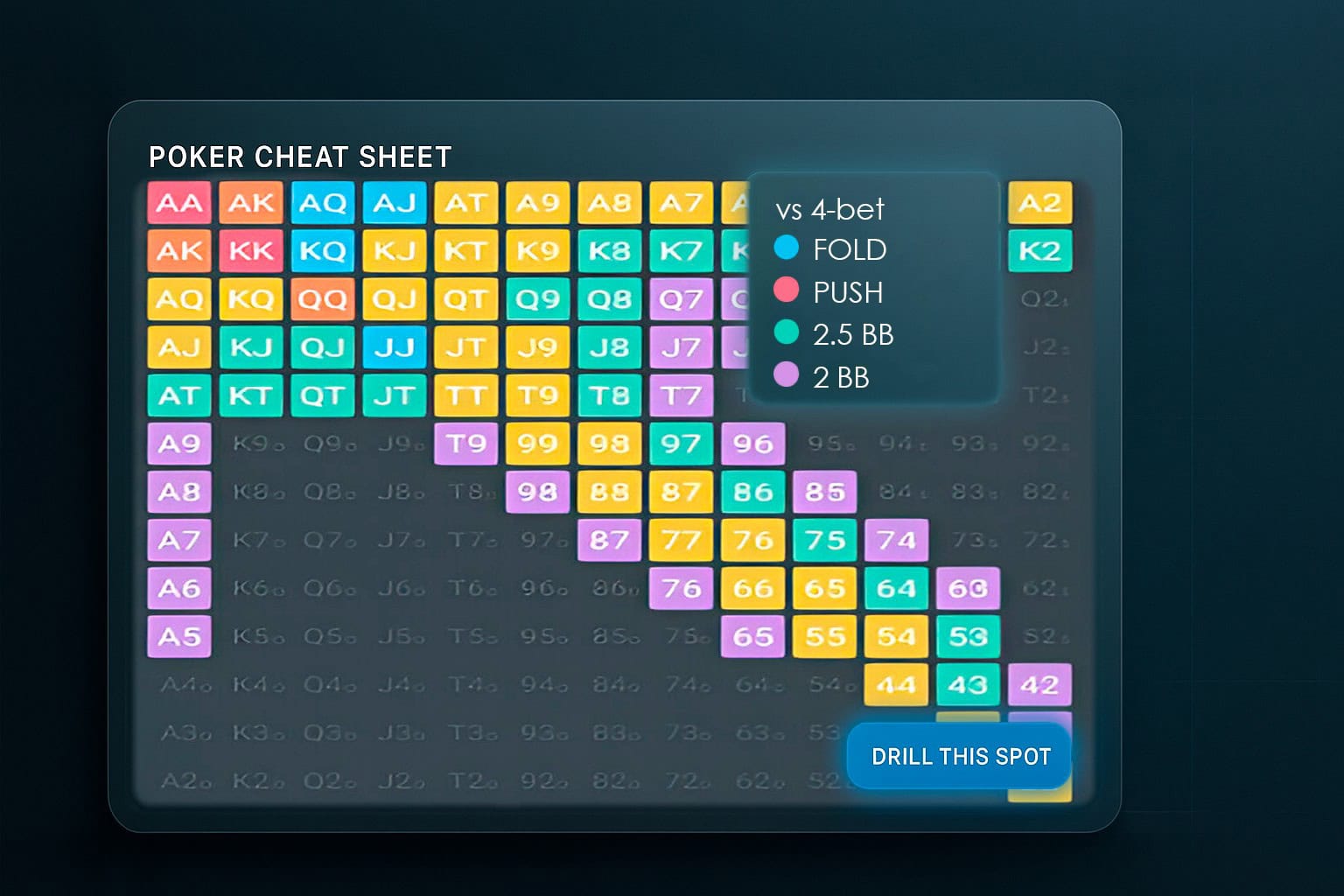
In the old days, players taped a poker cheat sheet to their monitor.
Now? Your training app builds one for you dynamically, based on:
- Your most frequent mistakes
- Position-specific leaks
- Bet sizing trends
- Spot-by-spot accuracy over time
Instead of memorizing preflop charts, you’re learning by doing, reinforced with immediate correction. It’s like a coach that never misses a thing – and never sleeps.
Ethics: When Does Training Become a Poker Cheat?
There’s a line – and most serious players respect it.
✅ Ethical use:
- Using bots or apps for post-session review
- Training scenarios outside of real games
- Using tools to understand tendencies and study EV
❌ Poker cheat territory:
- Using real-time assistance (RTA) during live games
- Running poker bots to auto-play hands online
- Relying on unapproved HUDs or data scraping
If your app talks to the poker client during a game – it’s probably illegal. But studying like a bot before or after play? That’s smart, and very, very effective.
The Mental Game Advantage
Virtual training doesn’t just teach you strategy. It strengthens your mind.
You learn to:
- Handle variance with calm
- Recognize when you’re tilted
- Refocus quickly after mistakes
- Build confidence in spots you used to fear
Some apps even include tilt meters or focus timers to help manage emotional leaks.
In the age of AI poker, mindset isn’t optional – it’s a skill.
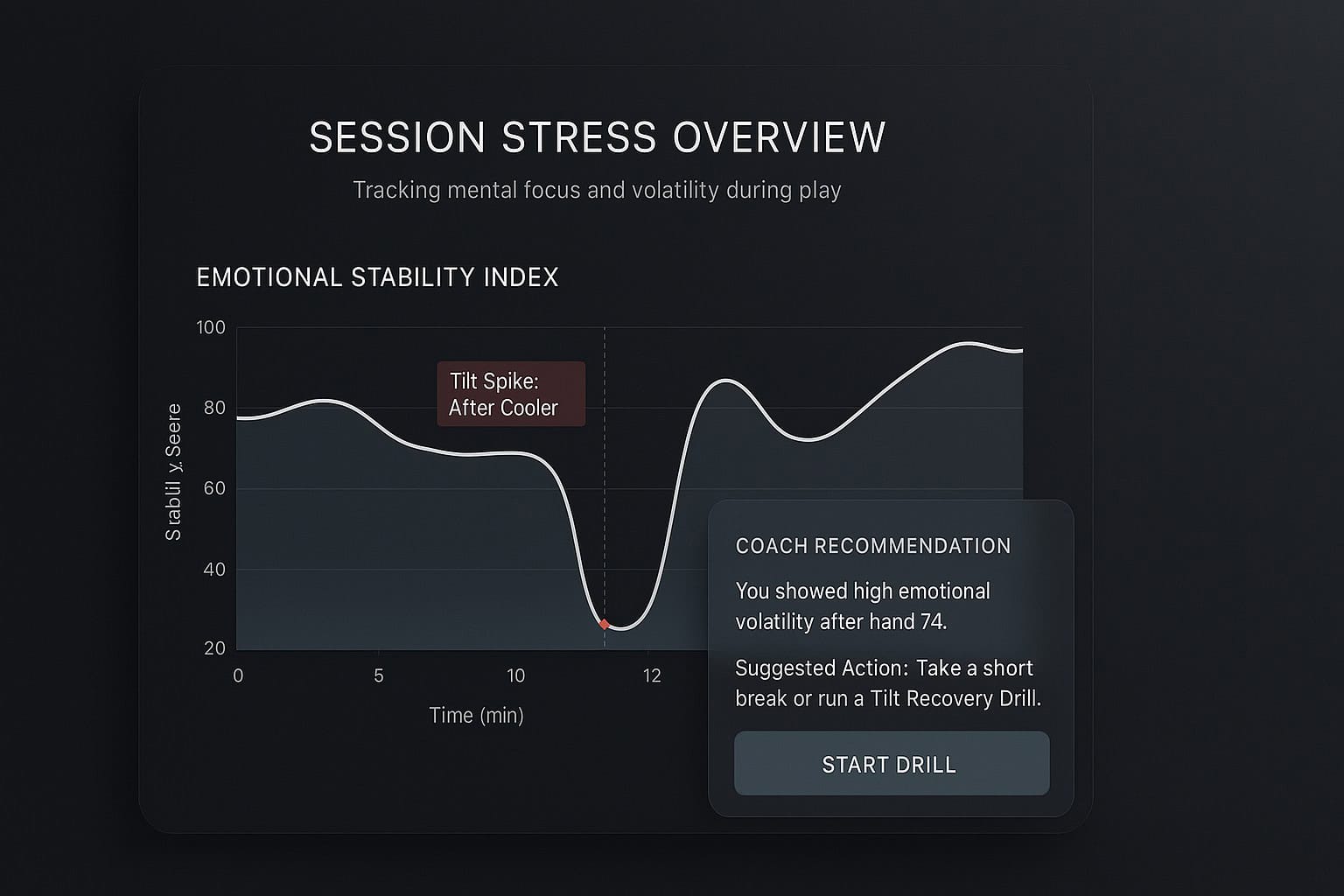
Can These Apps Replace Live Play?
Not entirely – but they can get you ready faster.
You still need real-table instincts, timing tells, and people reading. But virtual reps give you:
- Muscle memory
- Automated logic for standard spots
- A library of mistakes you won’t repeat
So when you do sit down live or online, your brain isn’t solving – it’s executing.
Final Thoughts: Practice Smarter, Not Just Harder
We’re in a golden age of poker training. No more guessing. No more throwing money at bad lines and hoping to learn later.
Now you can:
- Train against the best bots
- Get instant analysis
- Fix your game with surgical precision
- Build confidence hand by hand
You don’t need a big bankroll. You don’t need to be a pro.
You just need the willingness to outwork your future opponents – before you ever sit at the table.
And that starts with your first virtual hand.
